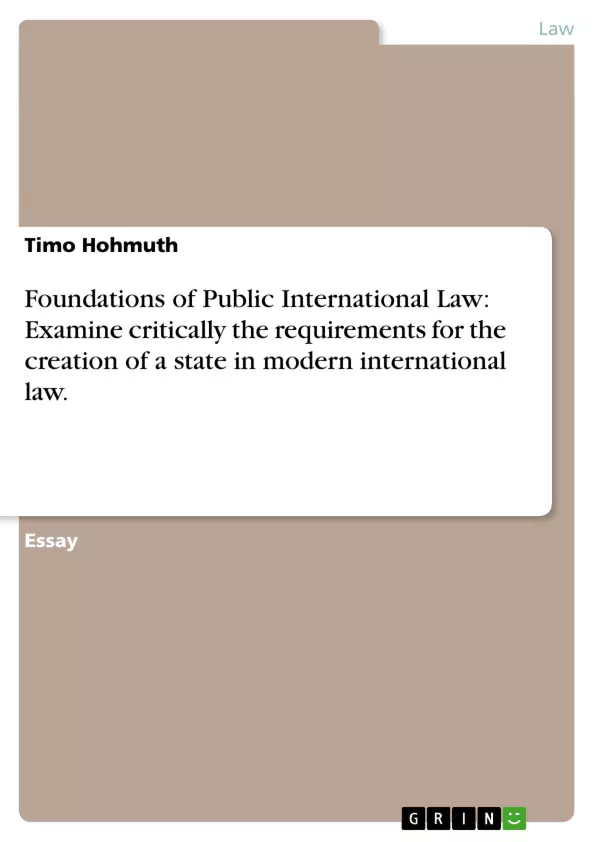“The orthodox positivist doctrine has been explicit in the affirmation that only States are subjects
of international law.”1 However, since international law is primarily concealed with the rights and
duties of states, it is necessary to have a clear idea of what a state is. Problems of definition of
statehood and of its application thus occupy an important place in the structure of international
law. The disputes on this topic tend to be focused on factual issues rather than on the relevant
legal criteria. The question of the criteria is a mixed fact and law question though. To create a
state entities must fulfil certain criteria of statehood. There are different opinions on the essential
criteria, which will be examined critically hereafter. 1 Lauterpacht, International Law, p. 489.
Inhaltsverzeichnis (Table of Contents)
- Introduction
- The Criteria of Statehood
- Traditional Criteria
- A permanent population
- A defined territory
- Government
- Capacity to enter into relations with other states
- Additional Criteria
- Self-Determination
- Recognition
- Traditional Criteria
- Conclusion
Zielsetzung und Themenschwerpunkte (Objectives and Key Themes)
The main objective of this text is to explore the legal criteria for the creation of a state in modern international law. The text examines the traditional criteria of statehood, including a permanent population, a defined territory, a government, and the capacity to enter into relations with other states. It also considers additional criteria, such as self-determination and recognition, which are often debated in relation to statehood.
- Criteria of Statehood
- Traditional Criteria
- Additional Criteria
- Self-Determination
- Recognition
Zusammenfassung der Kapitel (Chapter Summaries)
The first chapter introduces the concept of statehood in international law and highlights the importance of defining the criteria for statehood. The chapter discusses the traditional criteria of statehood as established by the Montevideo Convention and examines the significance of each criterion. It also briefly introduces the concept of self-determination and recognition, which will be explored in more detail later in the text.
The second chapter delves into the traditional criteria of statehood, providing a more detailed analysis of each criterion. It explores the complexities and potential challenges associated with fulfilling these criteria, drawing on examples and case studies to illustrate the practical application of these principles.
Schlüsselwörter (Keywords)
The main keywords and focus topics of this text include statehood, international law, criteria of statehood, Montevideo Convention, permanent population, defined territory, government, capacity to enter into relations with other states, self-determination, and recognition. These keywords reflect the core concepts and research focus of the text, providing an overview of the key themes and arguments presented.
- Quote paper
- Dr. Timo Hohmuth (Author), 2000, Foundations of Public International Law: Examine critically the requirements for the creation of a state in modern international law., Munich, GRIN Verlag, https://www.hausarbeiten.de/document/31320


